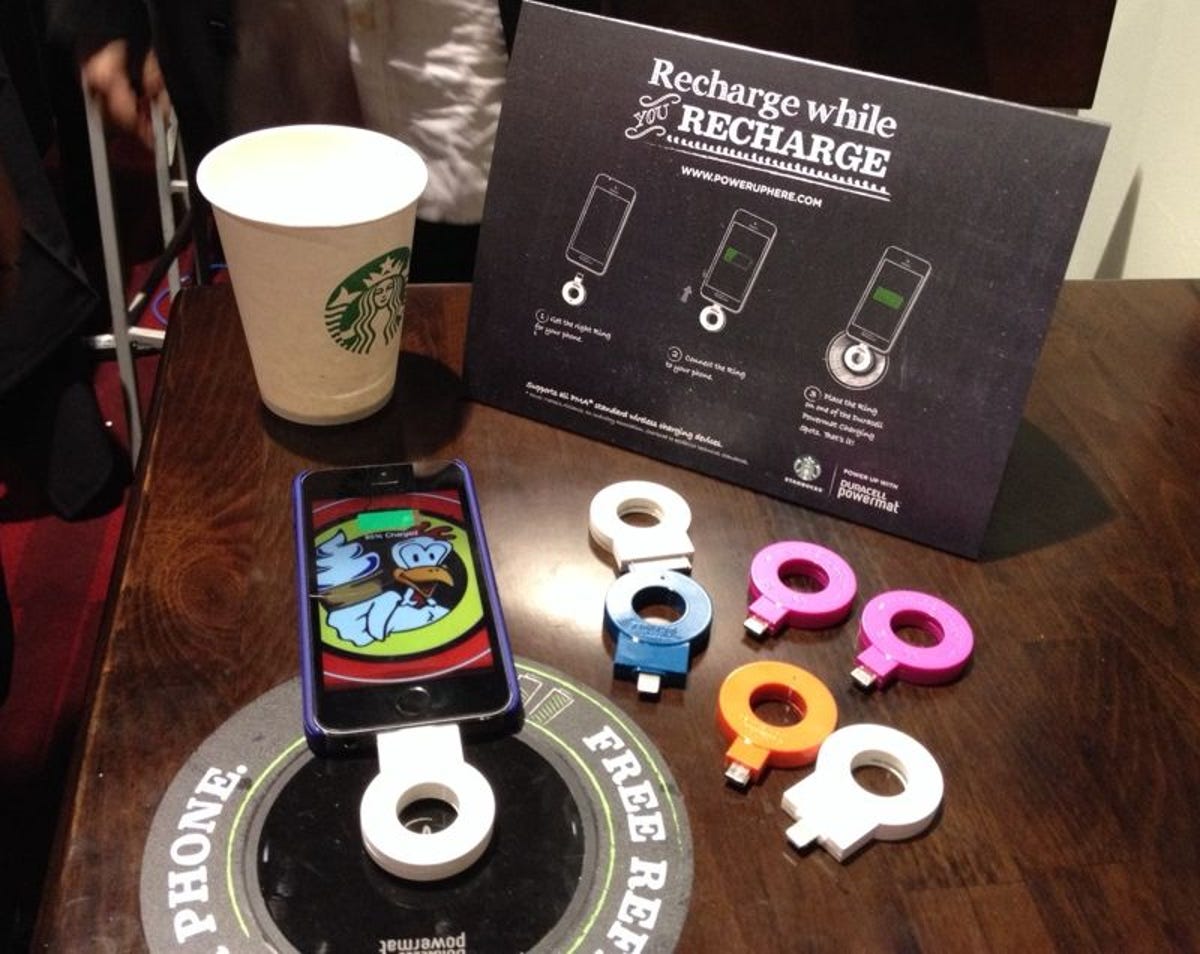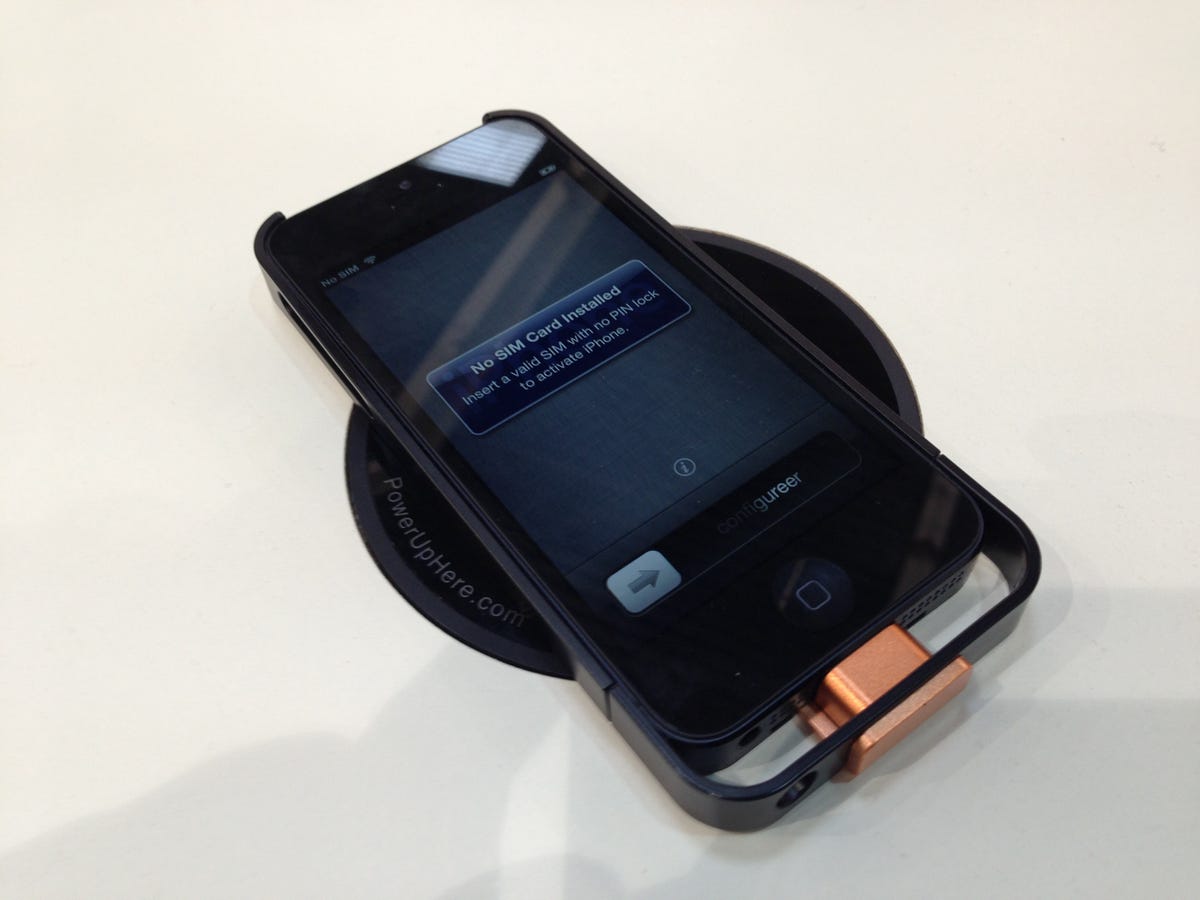
Photo by Rick Broida/CNET
Come for the java, stay for the wireless juice.
Starbucks said on Thursday that it would roll out Powermat’s wireless charging station in its Starbucks and Teavana shops. The deployment will begin in the San Francisco Bay Area this year and expand to other metropolitan areas in 2015.
Starbucks’ decision could go a long way toward bringing some clarity to the state of wireless power, which has been mired in a three-way battle of differing standards that has resulted in customer confusion. The coffee chain’s early decision to supply Wi-Fi was instrumental in the adoption of that technology more than a decade ago, and Powermat Technologies is convinced history will repeat itself.
“This is the harmonization of the industry that consumers are clamoring for,” Daniel Schreiber, president of Powermat Technologies, said in an interview.
A quick resolution, however, is still far from reach. A vast majority of the wireless power-capable smartphones — such as high-end Nokia Lumia handsets — operate on Qi, a standard led by the Wireless Power Consortium.
Related stories
- Wireless charging takes big step forward as rival groups team up
- Wireless charging still has strings attached
- Wireless charging powers shift as Qualcomm, Samsung take sides
But Starbucks and Powermat plan to install “Powermat Spots,” which will be located in designated areas such as tables and counters, that run on a different and incompatible standard championed by the Power Matters Alliance and Duracell Powermat, a joint venture between Powermat and Procter & Gamble’s Duracell brand. Only the addition of a compatible charging case would allow most phones to work with the spots.
Adding to the confusion is a third standard called Rezence, back by the A4WP, a group spurred on by Qualcomm and Samsung Electronics using technology that’s not yet in the market. In February, the PMA and A4WP signed a deal to work on a way for both of their standards to sit alongside one other and play nice.
Part of the dilemma is that the two active standards have approached wireless power from two different sides. The PMA has gone and installed charging stations in locations such as Starbucks, which ran a trial with the group in fall 2012 but doesn’t have any phones using the technology.
Conversely, Qi is found in a number of different phones but can’t work with the public charging stations that have been installed by the PMA.
Schreiber said that’s beginning to change. He noted that the Asus PadFone X was the first smartphone with PMA technology embedded in the phone, likely at the request of AT&T, which has been pushing that standard as well. Sprint’s recently announced Kyorcera Hydro Vibe also comes with PMA wireless charging as an option. Samsung now offers a replacement back cover that is PMA-compatible, although it has long offered a Qi cover as well.
Schreiber also pointed to the Duracell PowerCase cover for the iPhone 5S, which is located on Apple’s website, as another positive signal. Apple has stayed out of the wireless charging fray and hasn’t committed to any standard.
The hiccups of consumers getting confused over the differing wireless standards represent a near-term problem, Schreiber said. He expressed his confidence that more smartphones will start incorporating the PMA standard, driven in part by Starbucks’ support.


Roger Cheng/CNET
For Starbucks, the PMA standard is the most attractive one because it integrates user identification capabilities, so a shop can keep track of its customers based on where and how long their phones have been on a charging spot. If, for instance, the shop recognizes that a person has been sitting at a charging station for a while without making a purchase, it could theoretically send that phone a coupon.
Starbucks was supposed to make a decision on the trials with Powermat by spring 2013, but was pushed back for further testing.
“We were pleased with the customer response to the pilot tests, and we’re now expanding this offering nationally to provide our customers a quality and reliable experience as they use our store as their respite,” Starbucks Chief Digital Officer Adam Brotman said in a statement.
Powermat Technologies is ramping up quickly, and Schreiber said he wouldn’t be surprised if Starbucks shops in other markets got their charging station as soon as this year. He hopes that will speed the end to the bickering over standards.
“Everyone will be highly motivated to solve this,” he said. “Consumers don’t care about the alphabet soup of standards.”



